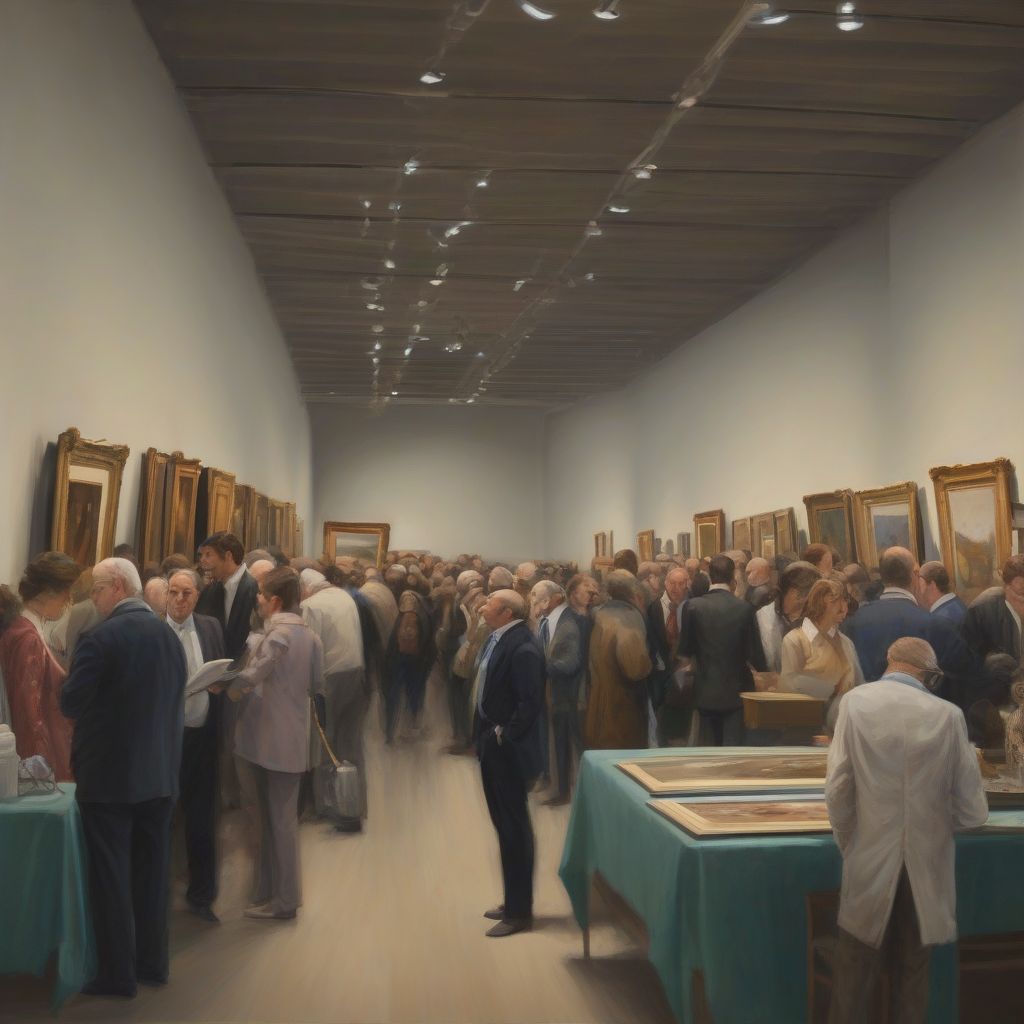Investing in tangible assets like real estate or precious metals is a well-trodden path for investors seeking portfolio diversification. However, a less conventional but potentially lucrative avenue is Investing In Paintings. This form of alternative investment can be alluring, offering not just potential financial returns but also aesthetic pleasure and a tangible piece of art history. But navigating the art market requires knowledge, patience, and a keen eye. This guide delves into the intricate world of investing in paintings, equipping you with the insights needed to make informed decisions.
Understanding the Allure of Art Investment
The art market, much like the financial markets, is driven by supply and demand. The supply of renowned artworks remains relatively fixed, especially with masterpieces, while demand from collectors, museums, and investors continues to grow globally. This dynamic creates a potential for value appreciation, making paintings an attractive asset class for those seeking long-term growth.
Why Invest in Paintings?
Several compelling reasons draw investors to the art market:
- Potential for High Returns: Historically, certain segments of the art market have demonstrated impressive returns, outperforming traditional asset classes. However, it’s crucial to remember that past performance doesn’t guarantee future results.
- Diversification: Art acts as a hedge against inflation and market volatility due to its low correlation with traditional investments. A diversified portfolio that includes art can potentially enhance overall returns and mitigate risk.
- Tangible Asset: Unlike stocks or bonds, paintings are tangible assets. Owning a piece of art provides a sense of ownership and aesthetic enjoyment that paper assets can’t replicate.
- Legacy and Passion: For many, art investment is driven by a passion for art history, specific artists, or movements. The ability to own and preserve a piece of cultural heritage holds significant personal value.
 art auction
art auction
Navigating the Art Market: Key Considerations
While the prospect of art investment is exciting, it’s essential to approach it with a cautious yet informed mindset. Here are some crucial factors to consider:
1. Due Diligence is Paramount
Just as with any investment, thorough research is fundamental. Understand the artist, their career trajectory, the artwork’s provenance (ownership history), and its condition. Authentication and valuation are critical, often requiring expert opinions from art historians, appraisers, and conservators.
2. Liquidity and Transaction Costs
The art market is less liquid than traditional markets. Finding a buyer for a painting can take time, and transaction costs, including commissions for galleries, auction houses, insurance, storage, and shipping, can be substantial.
3. Market Volatility and Trends
Like any market, the art market experiences cycles and trends. Certain artists or movements may be in vogue, while others fall out of favor. Understanding market dynamics and seeking expert advice can guide your investment strategy.
4. Storage and Conservation
Paintings are delicate and require proper care. Climate-controlled storage, regular maintenance, and potential restoration are ongoing costs that factor into the overall investment.
FAQs about Investing In Paintings
How do I start Investing In Paintings with a limited budget?
- Prints and Multiples: Explore limited edition prints or multiples by established or emerging artists. These options offer a more affordable entry point into art collecting.
- Emerging Artists: Research and identify promising emerging artists whose works are more accessibly priced. However, due diligence is even more critical in this space.
- Art Funds: Consider fractional ownership through art investment funds. These funds pool investor capital to purchase high-value artworks, making blue-chip art more accessible.
What are the risks associated with Investing In Paintings?
- Lack of Liquidity: Selling a painting can be time-consuming, and finding the right buyer at the desired price isn’t guaranteed.
- Market Volatility: Art market trends fluctuate, and the value of your investment can depreciate.
- Forgery and Authenticity Issues: The art world has instances of forgeries. Thorough authentication is crucial to avoid costly mistakes.
- Storage and Maintenance Costs: Ongoing expenses related to insurance, storage, and conservation can impact returns.
investment.mansfieldtxfarmersmarket.com/wp-content/uploads/2024/09/art-gallery-66de6b.jpg" alt="art gallery" width="1024" height="1024">art gallery
Conclusion
Investing in paintings can be a rewarding experience, offering potential financial returns, aesthetic pleasure, and a tangible connection to art history. However, it’s not a decision to be taken lightly. Thorough research, expert guidance, and a clear understanding of the market’s nuances are essential for navigating this specialized field.
For investors seeking to diversify their portfolios with alternative assets, paintings present a unique opportunity. By approaching art investment with knowledge and a long-term perspective, you can potentially add a valuable and enriching dimension to your investment journey. Remember, continuous learning about market trends, economic indicators, and financial strategies is crucial for making informed investment decisions. Explore the resources available on our website to deepen your understanding of finance, markets, and investments.